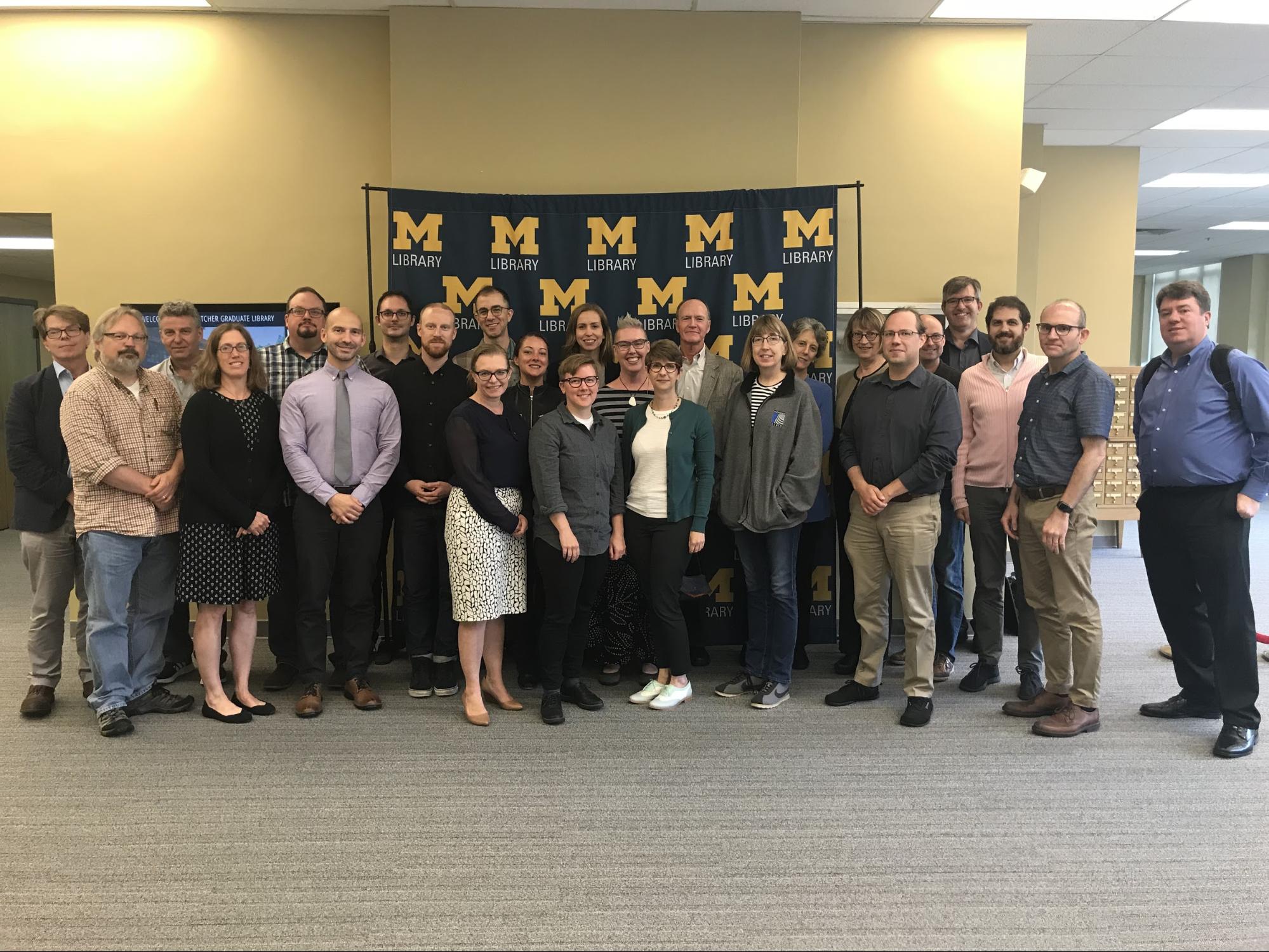Preservation at Fulcrum
Emma DiPasquale
Durability is Fulcrum’s central, defining principle. In creating a platform for scholars for whom multimedia and more complex digital objects play a major role in their arguments, it is critical we preserve the entirety of that work and experience for future readers and users. At Fulcrum, we want to be transparent with authors, publishers, and readers not only about the importance of durability, discoverability, and accessibility, but also about the ways in which they can reliably render and reuse scholarship hosted on Fulcrum in the future.
Our platform is dedicated to providing durable, long-term stewardship for digital objects. Currently, a majority of the digital objects hosted on Fulcrum are ebooks, many with supplemental rich media objects. The platform is built on the Hyrax framework of Samvera/Fedora software, an open source infrastructure commonly used for building institutional and data repositories. Objects are preserved in the collections of the University of Michigan Library, also the technology home of HathiTrust.
Workshop
While Fulcrum currently provides trusted solutions for long term preservation, we are constantly working to ensure our solutions are the best they can be. In an effort to identify preservation strategies for this kind of digital scholarship, the Fulcrum team hosted a two-day workshop at the University of Michigan Library in early September. This brought together folks from three important players in the ebook preservation space (preservation agents HathiTrust, Portico, and CLOCKSS), four press initiatives that are producing enhanced ebooks (Manifold, supDigital, Fulcrum, and Vega), and library and technology experts in preservation from Michigan and New York University Libraries. With set goals, we began to unpack the many questions that surround the topic of enhanced ebook preservation.
Our key goals for the meeting were:
- To understand the scope and nature of current enhanced ebook initiatives through examining real case studies.
- To identify the common core of preservation challenges that need to be addressed when considering the real case studies presented, understanding the experiences of Portico, HathiTrust, and CLOCKSS so far and the constraints and challenges they experienced.
- To explore the possible workflows, sustainability models, and division of roles and responsibilities that could be created to facilitate the preservation of the enhanced ebooks that are and will be increasingly published.

We assigned some advance reading that outlined Manifold’s thoughts on preservation as well as Stanford’s approaches to preservation, which provided a solid framework for our first sessions aimed at creating working definitions: of an enhanced ebook, of digital preservation, and of digital preservation for enhanced ebooks.
We identified and defined key preservation pathways, including bit-level, migration, and emulation. Bit-level preservation ensures the original file is saved (meaning it doesn’t protect against obsolescence); migration involves changing the format of a file so it is able to be rendered with current hardware or software (this can cause changes in the ‘look or feel’ of a file); and emulation uses programs that imitate the original (obsolete or unavailable) hardware or software in order to render the original digital object.
We recognized the varying complexity and types of projects, ranging from enhanced ebook to interactive scholarly work, and identified some patterns for exploring preservation pathways for those different type of works. Detailed presentations of case studies by publishers, providers, and libraries addressed variations of the aforementioned kinds of preservation being utilized, as well as the types of work being published and forthcoming, and presented thoughts about future preservation plans.
We emerged from this workshop with a renewed sense of urgency and plans to continue to tackle these issues, but we recognized our conversations only just began to touch a much larger, ongoing debate about preservation.
The many questions we wrestled with helped all of us to think about how we communicate about preservation. One of our most immediate and actionable takeaways is to continue work on Fulcrum’s preservation policy, which will be posted in early 2019. In the spirit of transparency, we are developing a policy that addresses what is and what is not being preserved, the level of commitment we’re making (preservation level and the period of commitment) as well as who we are partnering with.
The conversations we engaged in during this workshop helped us shape our direction for further development work. We are continuing to work on defining our workflows and identifying other folks who we should be working with, which includes the larger community. We welcome questions and feedback about our preservation practices and our preservation policy. We hope to continue to collaborate with these folks at others at upcoming conferences and workshops, and also welcome ideas for proposals, panels, and roundtables.
If you have anything you’d like us to think about as we continue to develop our preservation stance, please email us at fulcrum-info@umich.edu.